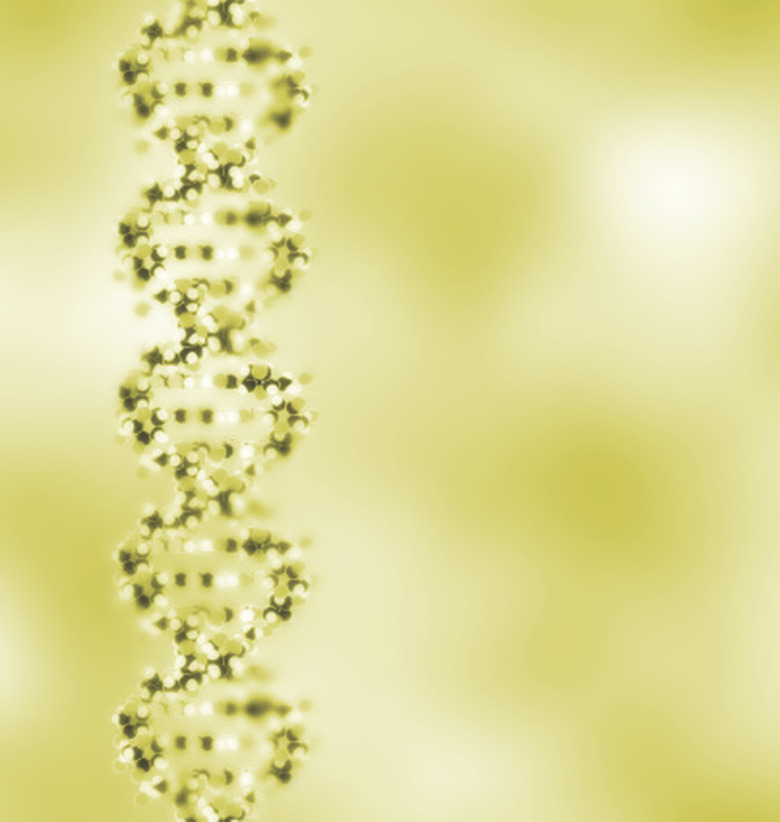How To Calculate Recombination Fraction
In genetics, many traits are closely linked on a particular chromosome, and are inherited together. In order to determine how closely two different alleles are linked, a measure called the recombination fraction was developed. The recombination fraction is the number of offspring that inherit different alleles of a trait from each parent, rather than inheriting all alleles from the same parent. The recombinant fraction is an important means of determining genetic distance, and is relatively straightforward to calculate.
Step 1
Determine the number of recombinant offspring. Count the proportion of offspring who exhibit traits that are recombinant; that is, contain alleles from each parent. For example, say you are breeding a particular plant, and count 40 offspring with a recombinant trait and 60 nonrecombinant offspring.
Step 2
Add the recombinant and nonrecombinant offspring. Using the example above, adding the two categories (40 and 60) gives 100.
Step 3
Divide the number of recombinant offspring by the sum of the recombinant and nonrecombinant offspring. In this example, dividing 40 by 100 gives 0.4. This is the recombinant fraction.
TL;DR (Too Long; Didn't Read)
The recombinant fraction will never exceed a value of 0.5. If you have calculated a recombinant fraction greater than this number, you have made an error.
Cite This Article
MLA
Bourdin, Thomas. "How To Calculate Recombination Fraction" sciencing.com, https://www.sciencing.com/calculate-recombination-fraction-8209444/. 24 April 2017.
APA
Bourdin, Thomas. (2017, April 24). How To Calculate Recombination Fraction. sciencing.com. Retrieved from https://www.sciencing.com/calculate-recombination-fraction-8209444/
Chicago
Bourdin, Thomas. How To Calculate Recombination Fraction last modified March 24, 2022. https://www.sciencing.com/calculate-recombination-fraction-8209444/
